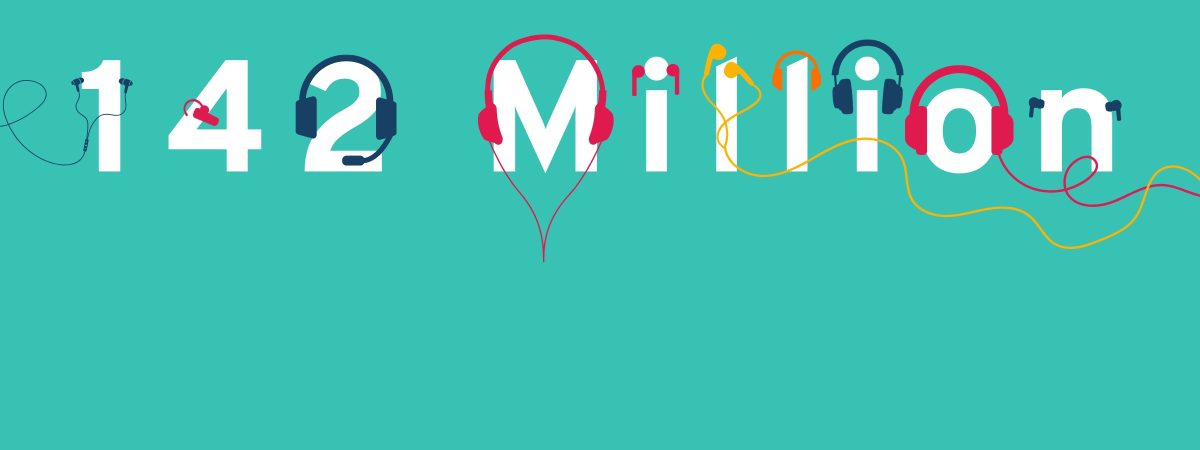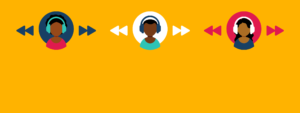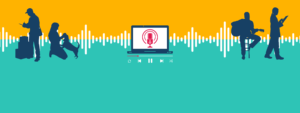I think this should be obvious: podcasting has changed a lot in the last ten years, almost entirely for the better. I say, “should,” because today I still often read and hear some industry observers lamenting these changes, expressing nostalgia for “the good old days.”
True, it’s harder to top the charts with a new show, and today’s charts look a lot different than they did a decade ago. But the shifts underlying these differences have opened up so many more opportunities for both podcasters and audiences. That’s why I’m optimistic for 2025.
Dateline 2014 – A Serial Milestone
To get some perspective let’s travel back to October of 2014. That month Serial debuted and changed the podcast landscape forever. As the first truly mainstream podcast, it was the fastest to ever reach five million total downloads in Apple’s iTunes, roughly six weeks and eight episodes in. (This was back when Apple was the medium’s dominant platform). The subject of countless news articles, the show’s popular breakthrough even spurred its own Saturday Night Live parody.
Today, Serial is still in production, though it’s been years since the show topped the charts. Some observers say this is one indicator of a decline in demand for serialized narrative journalism. Others might argue that it’s hard for lightning to strike twice. Without denying either proposition, I think it’s a sign of how podcasting has grown and evolved in the last decade, with no knock on Serial.
Talk About Scaling: Podcasting Goes from 42 to 142 Million
First, let’s just examine the scale of the medium. In 2014 Edison Research’s Infinite Dial reported that 15% of the population 12+ listened to a podcast in the last month. Jump forward to 2024, 47% of Americans 12+have listened to a podcast in the last month. On its face that 32 point jump looks very impressive, a 3.1x increase.
But only looking at percentages obscures an even more impressive boost, because the US population didn’t remain static. In 2014 that 15% represented 42 million people. In 2024, 47% of the 12+ population is 142 million people, or 3.4 times more podcast consumers than 10 years ago.
If topping the charts is one standard of success, then it’s incontrovertible that the bar has been substantially raised. There are simply more people listening (and there are more podcasts), so a podcast needs significantly more audience to reach number one. Even though Serial arguably attracted millions of new listeners to the medium – seven million more were monthly consumers by March of 2015, year-over-year – the show was competing for a share of a much smaller pond. And by those standards its success is still utterly remarkable.
A More Broad-Based Podcast Audience
It’s not just the scale that’s changed, the overall composition shifted, too.
A decade ago it was common to hear that podcast listeners were more educated and affluent than average. Back then I certainly assembled many a slide deck and blog post citing that stat. And it was true: In 2015, we had adult podcast listeners indexing at 144 compared to the US population for having a household income of $75,000 or more.
Podcast consumers are still more affluent than the average American, but the gap narrowed a lot. The Podcast Landscape 2024 study from Sounds Profitable indexes podcast consumers at 109 compared to the population as a whole.
Education shows a similar trend. In 2015 we pegged podcast listeners as being far more likely than Americans in general to have a bachelor’s or higher degree. The Podcast Landscape study now has podcast consumers pretty much even with the national average.
Essentially, this means that from a socio-economic point of view, the podcast audience looks a lot more like the general population today than when Serial entered the zeitgeist.
A Tale of Two Charts (plus One)
We see this clearly when we compare the iTunes chart to when Serial hit the five million download mark. Of course, the show was number one in 2014. Those who were into podcasting probably recall how the medium was nearly synonymous with public radio, and that’s unmissable in the chart. Seven of the remaining nine shows in the top 10 came from the system.
- Serial*
- This American Life*
- NPR: Car Talk Podcast*
- NPR: Wait Wait… Don’t Tell Me*
- Radiolab from WNYC*
- Freakonomics Radio*
- The Moth Podcast*
- NPR: TED Radio Hour*
- Stuff You Should Know
- Slate’s Serial Spoiler Specials
*Airs on public radio or from a public radio organization
Flash forward to today and that Apple top 10 looks very different.
- Mel Robbins Podcast
- The Joe Rogan Experience
- The Daily*
- The Telepathy Tapes
- Dateline NBC
- The Severance Podcast
- Crime Junkie
- Monster: BTK
- Shawn Ryan Show
- The Megyn Kelly Show
*Airs on public radio or from a public radio organization
There’s just one associated with public radio in the top ten – the Daily airs on some public radio stations – and only one from an actual public radio organization in the top 20. But what we have now is more varied. No surprise that three are true crime shows, but we also have a show about autism, The Telepathy Tapes, and a companion podcast to the TV show, “Severance.”
To be fair, Apple no longer dominates as a listening platform, skews older and higher income, and there’s more than one chart. So it’s worth also looking at Spotify’s top 10 for this week. Half the shows are shared with Apple’s, including The Telepathy Tapes and The Severance Podcast. But, no public radio podcasts.
- The Joe Rogan Experience
- The Mel Robbins Podcast
- This Past Weekend w/ Theo Von
- Shawn Ryan Show
- The Telepathy Tapes
- The Diary of a CEO
- Anything Goes with Emma Chamberlain
- The Severance Podcast
- Not Gonna Lie with Kylie Kelce
- Rotten Mango
The Podcast Audience Doesn’t Look As Much Like the Public Audience Any Longer
This comes down to socioeconomics.
Two times as many public radio listeners (70%) have an income over $75k than either the podcast audience or general population. It’s similar for education, with 70% of the public radio audience, as of 2021, with a bachelor’s or higher degree – closing in on twice the rate of the general and podcast public.
Again, that’s not a knock against public radio. Rather as the podcast audience grew, the audience also had to become more socio-economically diverse.
Of course, that doesn’t mean there isn’t a need or taste for public radio style programming. The Daily’s continued top 10 residency certainly reflects that. And we cannot forget that Serial ignited the fever for true crime podcasts. Only today that genre has grown, now supporting a mix of styles, formats and topics.
Optimism for Podcasting in 2025
I started off saying all these changes are for the good. That’s because a bigger, more socio-economically diverse podcast audience means much more opportunity for more of podcasters and creators. Whereas ten years ago I fielded concerned questions from too many would-be podcasters about needing to emulate This American Life if they hoped to build an audience, in 2025, there are so many other successful models to follow.
Looking again at the most recent top tens, I don’t see the decline of narrative podcasting – there’s still narrative there – but rather the growth of new and different forms. The top of the charts represent increasingly rarefied air, which means you don’t necessarily have to land a show there in order to find success, anyway.
And with 142 million Americans spending time with podcasts every month, there’s a 3.4x greater chance of finding an audience in 2025 than in 2014.
That’s why I’m optimistic for 2025, and for the years to come.




